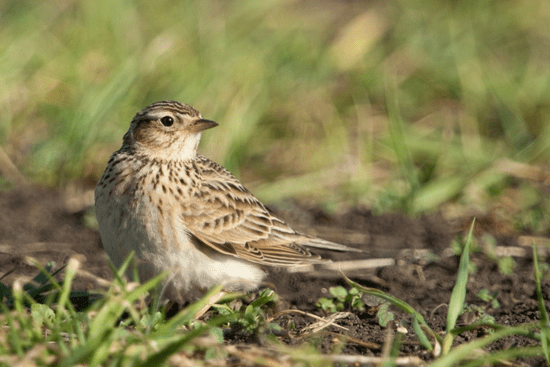Its wings are quite long, broad at the base and pointed. His tail is rather long and slightly indented.
Skylark
In Flight
Skylark
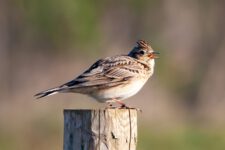
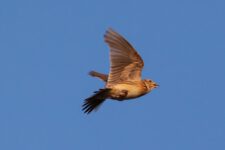
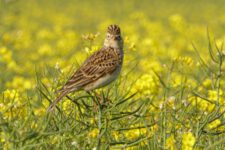
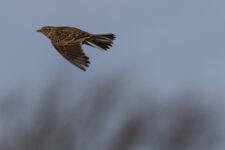
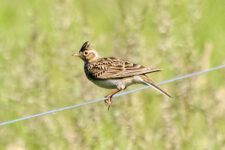
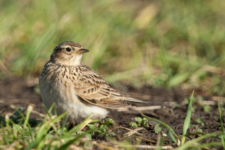
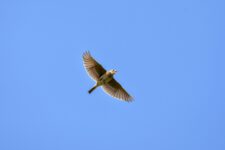
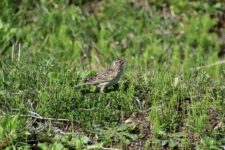
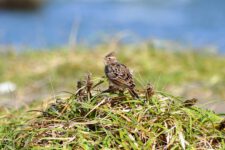
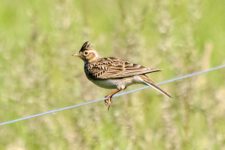

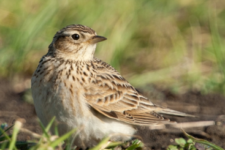
Species : Skylark / Alauda Arvensis
English name : Skylark Family: Alaulidae
Cut : 16-18 cm
span : 30-36 cm
Weight : 30-55 gr
Longevity : 8 years
Aspect
His body is plump. Its wings are quite long, broad at the base and pointed. His tail is rather long and slightly indented. The skylark has a small tuft of erectile feathers that form a short, wide-brimmed crest on the head. The male can train his hoopoe. The adult is brownish-brown or brown-gray strongly striated with brown-black on the back with whitish eyebrows. Her belly is cream-white, washed with fawn on the breast and flanks. His breast is distinctly streaked with black-brown, his tail is brown with a white liserai on the sides. The back of its wings is bordered with white. Its beak is short, rather thin and pointed. It is dark brown with a yellowish brown base. Its legs are yellowish brown, rather short and thin. His eye is nutty
( Taken from CRAMP 1988 )
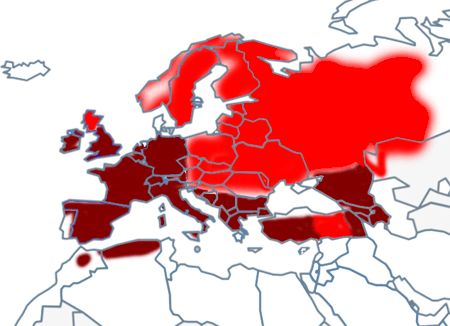
 : Present all year long
: Present all year long
 : Present only during the breeding season
: Present only during the breeding season
The Northern Spotted Wolffish is found in the British Isles and Scandinavia. Its range extends to eastern Siberia, the Middle East and China. It winters in Western Europe and around the Mediterranean. In France, the Alouette des champs winters over the entire national territory below 1000 m altitude. It is found on open ground covered with dense herbaceous vegetation. It is present on agricultural areas, meadows, pastures, cereals, plowed fields but also on grassy wastelands and maritime dunes. The skylark is in sharp decline in Northwest Europe as a result of changes in cropping practices. It is estimated that this decrease to almost 50% of the population in half a century
Reproduction
In France, the Alouette des champs breeds throughout the territory, from sea level to 2700m altitude in the Alps. As soon as the end of March, and especially in April, begins its breeding season. Here are the main characteristics of the breeding of the lark:
In France, the Alouette des champs breeds throughout the territory, from sea level to 2700m altitude in the Alps. As soon as the end of March, and especially in April, begins its breeding season. Here are the main characteristics of the breeding of the lark:
Number of broods: two to three broods, depending on the couple,
Number of eggs: 3 to 5 grayish white eggs heavily spotted with olive brown,
Incubation: 11 to 14 days (2 sexes)
Nest: The nest is built on the ground away from a herbaceous plant. It consists of dry herbs.
Flight: 20 days
Emancipation: about 25 days
Survival rate: 45.5%
Predation is the main cause of nest destruction. However, bad weather, especially heavy rains, can destroy much of
Migration
The Skylark migrates day and night. Migratory returns come from early February, when weather conditions are milder. Thus, prenuptial migration begins on February 1st or 4th in Alsace (DRONNEAU and FRAULI, 1990, 1991). In the Massif Central, the return migration begins on February 15th and 23rd and continues until the beginning of March (BRUNET, 1988). There are still passages until the beginning of April. It is not unusual that in the case of heavy snow showers, the earliest migrants are forced to migrate back. These leakage movements can be fast and massive.
Postnuptial migration occurs at the earliest in the second half of September and becomes very active only in October, ending in mid-November (YEATMAN, BERTHELOT & JARRY, 1994). The populations of Northern Europe migrate in autumn to the Iberian Peninsula and the Maghreb.
CRAMP (1988) locates the lark migration of the lark from September (northern Europe) to November (southern Europe), with a peak in northern Europe in the first half of the year. October. He locates the return migration between January (for southern Europe) and Mars (for northern Europe), with a peak of passage in February.













